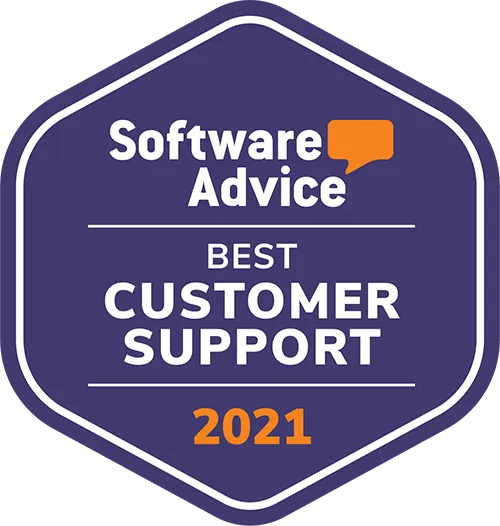It wasn’t a hard choice to select SmartSurvey. Not only did they understand what we were looking to achieve right from the start, they presented a solution that represented everything we needed.
Survey Reporting
Survey Reporting

Communicating your findings and the actions you will take with your survey results
Having successfully gathered, analysed and interpreted the data from all your survey respondents, you’ll want to present your findings in the most effective, but objective way, which is where the value of survey reports really come into their own.
Given that the job of the survey report is to describe the survey, it’s results and any patterns or trends in your findings, before coming to a conclusion; having the right template for your survey report and the right survey reporting software is essential, not only for the writing, presenting and sharing of your survey’s findings, but in how effectively you’re able to take decisions and actions based on it.
Considering the audience of your report
Before focusing on the structure of your survey report and the key areas you need to be including, it’s worth giving some careful thought to the audience who will be reading it, as that can also influence the writing of survey reports.
While there are essential sections you need to include in the reporting of your survey findings, in other areas such as language, length and the look of your survey, there is a less precise formula, as it’s more about presenting data and insights in a way that best engages your audience.
Here are some considerations to think about:
Consumer or business
While it’s generally prudent to keep your wording simple and as easy to understand as you possibly can, it can also be helpful to adjust the tone of your language depending on if you’re reaching out to a consumer or business audience.
Subsequently, a chatty and more informal tone is more likely to resonate better with a consumer audience, than a formal and more serious tone, which is likely to be received better among business audiences.
Internal or external audience
Similarly, your survey report can be influenced by whether you’re targeting an internal or external audience, particularly with regards to its length.
For example, an external consumer audience, would be far less likely to tolerate a lengthy survey than an internal audience such as employees, who in some cases maybe subject to the mandatory completion of a survey, such as in a staff performance review survey. Therefore, when targeting external audiences, it’s better to keep your survey as short as possible.
Audience demographics
The demographical make up of your audience can also make a difference to how you present your survey.
While an older audience may respond well to text and graphs, a younger audience brought up in a world of multi-media, are likely to require a much more innovative and visual approach to keep them engaged. When it comes to analysing your survey results, you might think about helping a younger audience by presenting some of your findings with video content and easy to follow and engaging infographic content.
Examining your report structure
If someone views your survey report but may not have the time to read through the whole of the document, spitting it up into key sections can help give them a top-level overview of what it’s about and what they’re likely to get from it, so they can return to it when they have more time to read it in full.
When it comes to how to write survey reports, there is a typical structure and a number of key sections that your report needs to include:
1) Title page: similarly, to your survey questionnaire, your survey title needs to be short and engaging. It also needs to have a clear and brief description about what it’s about and who it is aimed at, in order to get your audience’s attention.
2) Table of contents: from the executive summary to the survey’s background and the methods that were used. Unless your report is extremely short, it needs to provide a table of contents with page numbering, to give readers a list of everything that’s in your report. This can also be helpful if your reader is in a hurry, as they can quickly check the various sections, then return to the section they need when they have more time to read it in full.
3) Executive summary: given that some people only read your summary, you really want the introduction to your survey to be as strong as possible. Summarising your report with a list of three or four standout findings from your research can really help to engage your audience and encourage them to read on.
4) Background: once you’ve engaged readers enough to get past your executive summary, you need to be able provide a bit of background context for the reader about what prompted you to create your survey and what you plan to do with the results, if they are to fully understand and appreciate its value.
To further help their understanding, you could also outline your original goals and objectives, and how well you performed in meeting these.
5) Survey methodology: next comes your survey method, whose objective is to help give your readers a better understanding of how you conducted your survey.
From your method of research, whether qualitative or quantitative research, to your choice of survey question types and many other areas in between. To help your readers’ understanding, this is your chance to highlight some of the mechanics behind your survey, which could include:
- Details of who you surveyed and when: Providing more detailed information about target audience of your survey – based on a range of factors, which could include anything from whether you were targeting a business or consumer audience, to the demographic make-up of that group. You would also need to include the approximate dates of when you carried out the survey.
- Information about your sample size: Details about your sample size and why you chose it.
- Details about your choice of distribution channels: Essentially the contact methods you chose to reach out to your target audiences with, whether by email or SMS, or a web link or QR code, or some other innovative channel.
- A description of the question types you decided to use: Which could include anything from open-ended to closed ended questions and the many variants possible with this type of question.
6) Survey results: when it comes to reporting survey data and reporting on your survey results, this is the main body of your report, which will provide more detailed survey analysis of your findings.
As well as top level statistics, such as the volume of people you surveyed, the number of responses you obtained and a breakdown of those who responded, your survey results should look to highlight any interesting trends or patterns you have identified from analysing the data.
Survey report examples, whether that’s providing a sample of typical answers to key questions in your survey, the use of statistics to illustrate the percentage of respondents who answered in a particular way and the use of visuals to help with the interpretation of results, can really bring your results section to life and better engage your readers.
7) Conclusion (and recommendations): having outlined your survey’s findings; you should think about the actions you need to take and what you want your readers to learn and take away from your survey and include this in your conclusion.
For example, if you ran a survey to investigate more about the impact of stress in the workplace, you might conclude from your survey findings that stress does negatively affect the work performance of your employees.
This might lead to you recommend the introduction of a raft of next steps or actions to reduce stress among your staff such as:
- Encouraging increased workplace wellness – by encouraging employees to eat more healthily and actively pursue more frequent exercise activities.
- Providing more flexible working hours – allowing employees greater flexibility over their working hours and the opportunity to work remotely, to enable a better work life balance.
- Offering onsite or distance counselling – to help employees better manage and relieve their causes of stress.
8) Appendices – your survey also needs to include an appendix at the end, which readers can refer to for more information.
The first thing this needs to include is a copy of your questionnaire, so readers can view any of the questions that were asked in your survey. This can also provide an opportunity for you to provide more raw statistical data and graphs for illustration purposes.
It can also be helpful to include a glossary in this section, to help explain any technical terms that the reader may need clarifying as they work through your survey.
Visual design considerations
While we’ve talked previously about the importance of good survey design, particularly during the creation of an online questionnaire, the value of strong visuals and good design for online survey reports is also essential to providing greater clarity and interest in the reporting of survey results.
When it comes to illustrating the findings of your survey, which could include statistics, or a visual breakdown of how different groups answered a particular question, the use of graphs or custom charts such as bar, line and pie charts, make it both visually appealing and easier to read. And depending on the time and budget available to you, you may also decide to make it more visually appealing with the use of further multi-media tools, such as infographics, word clouds, animated gifs and video content.
Having a strong design element running through your report can also be useful if you’re looking to make a presentation about your findings and want some strong visuals to back it up, which can be easily exported from your survey report, with online survey reporting tools.
Reporting insights versus data
When it comes to reporting survey findings, there can sometimes be a debate about reporting insights and reporting data, and which is best. But each has its own value, depending on what you’re trying to find out.
Essentially, data is the raw and unprocessed facts that are collected during a survey, particularly if the researcher has adopted a quantitative approach with mostly closed questions, where recipients are only allowed to answer Yes or No or select their answers from a list of options. This can be extremely helpful for surveys that require the fast collection and analysis of data, which can be turned into statistical data such as how many people own a particular commodity.
In contrast, a qualitative approach, which is more interested in gathering people’s thoughts, feelings and understanding, tends to use mainly open-ended questions, which is more likely to gather comment from which more meaningful insights can be gained.
Having said that however, many surveys adopt a mix of closed and open-ended questions, which involves analysing both the data and respondent feedback after it’s been gathered, to provide insight from which conclusions and actions can be made.
It’s also important to point out, that in today’s more competitive and faster moving marketplace, getting that insight more quickly is even more imperative to keeping businesses ahead, which is why more organisations are migrating to digital solutions.
Online survey reporting tools
While having the right tools to create the perfect survey report is essential, it’s equally important to have greater flexibility in how you can view, control and share your own survey report data.
From survey analysis tools that allow you to view survey responses historically or in real-time, then automatically generate reports to where they are needed, to features that allow you to share your data, but control what different individuals with different permissions are able to see.
Thanks to advancements in online survey reporting tools this is now all possible, helping to further enhance the subsequent decisions and actions you’re able to take.
How are we different?
UK based
Your data will be stored and processed here in the UK for your peace of mind.
Fanatical support
We pride ourselves on going above and beyond for our customers, providing expert advice and support whenever you need it.
You're in safe hands
Our secure platform and robust data protection measures ensure your data is safe and secure with us. We are ISO27001 and Cyber Essentials Plus certified.
We're human
We understand the importance of personal interaction, which is why we offer a human touch alongside our cutting-edge technology.
Accessibility matters
We're committed to making our surveys accessible to everyone, with a range of features to support those with disabilities.
Unlimited responses
With no limits on the number of responses you can collect, you can be sure your survey will reach as many people as possible without it being cost prohibitive.

Don’t just take our word for it
Over 500,000 users have registered to use SmartSurvey.


We couldn't be happier with SmartSurvey, we love its functionality and flexibility. This means we have been able to use one survey tool across many parts of the business.








Get in touch
We are ISO27001 certified, registered under the Data Protection Act and fully compliant with EU Privacy Laws.
Access to a knowledgeable account manager for personal assistance for when you most need it.
Our friendly design team is on hand to assist with any bespoke design and custom development requests.
We succeed if you succeed. Our goal is to help you carry out effective research and we’re here to help you achieve that.
